Welcome, fellow garden enthusiasts, food preservers, kitchen adventurers and camping enthusiasts! Today, I'm going to share with you a simple yet easy way to preserve the golden bounty of summer- with this how to dehydrate yellow squash recipe.
With a little time and my food dehydrator recipes, you can enjoy this and all your other favorite summer vegetables any time you want when you learn how to preserve them this way.
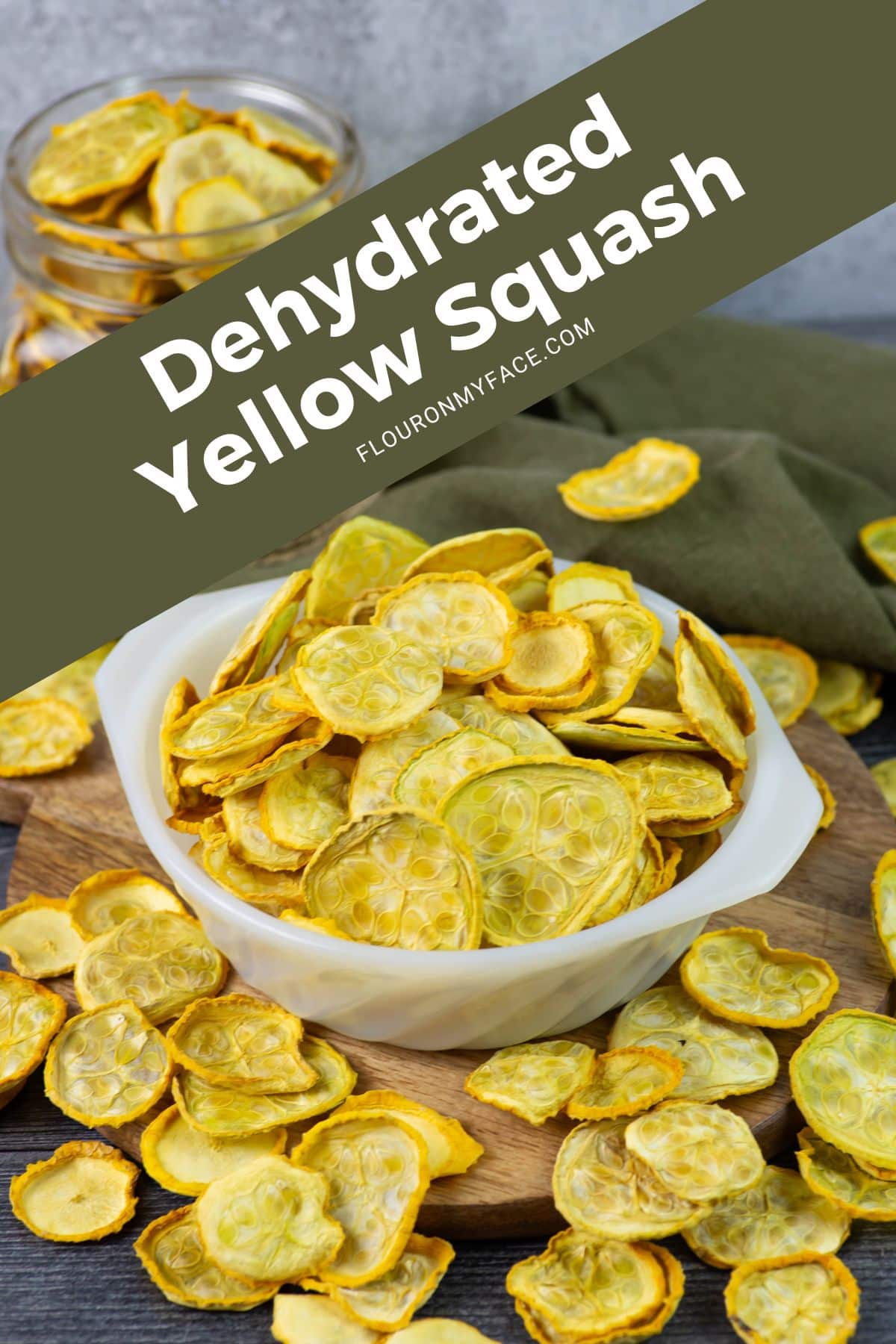
If you've found yourself with a bunch of yellow squash or zucchini taking over your kitchen counters. Or the oh so tempting stacks at your local farmer's market just too tempting. You might just be wondering what you are going to do now.
Using this vegetable dehydration process is how you can turn the abundance of your favorite summer vegetable into shelf-stable vegetables you can enjoy all year long.
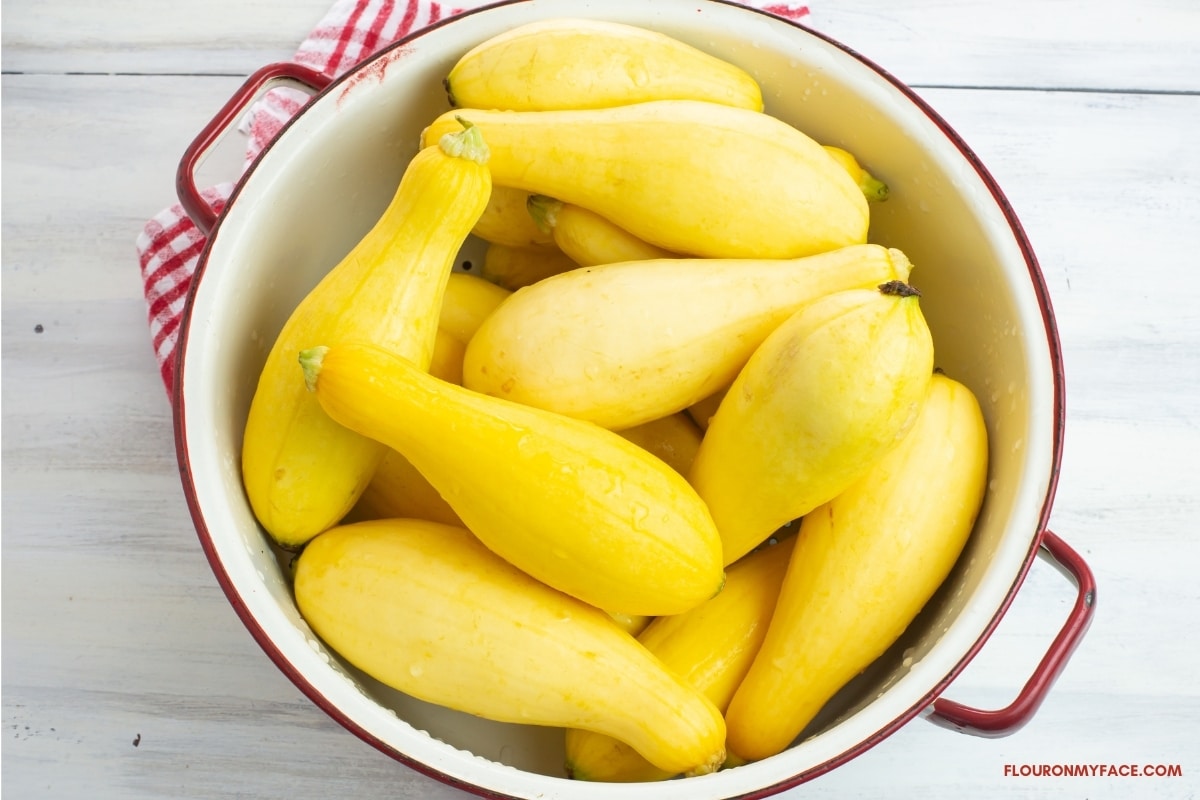
In this easy to follow step-by-step guide, I'll walk you through the ease of preserving yellow squash, drawing on my years of experience using food preservation methods to help you stock your shelves with, ready-to-use vegetable, fruit and herbs ingredients.
Dehydration is one of my favorite preserving methods along with canning, and freezing. This method is the easiest way to preserve produce.
Why dehydrate vegetables?
Drying vegetables is a brilliant technique used to preserve the bounty of fresh summer squash. It's not just about saving space in your freezer or making the most of seasonal sales; it's about capturing the essence of summer in each bite, long after the season has faded.
Dried vegetables and dehydrated fruit will last a very long time. As long as all of the moisture has been removed and the dried foods have been stored properly.
Now that electric food dehydrators are easily available we can slice or dice our favorite fruits and vegetables and dry them out for long term storage in less than 12 hours in most cases.
Who Benefits from Dehydrated Vegetables?
Dehydrated vegetables offer a wide range of benefits for various individuals and lifestyles. From outdoor enthusiasts to home cooks, dehydrated squash can be a valuable addition to their pantry staples.
- Gardeners: If you plant a vegetable or herb garden every year and always seem to have more fresh yellow squash and zucchini than you know what to do with you might consider purchasing an inexpensive electric food dehydrator.
- Campers: Dehydrated squash presents campers and hikers with lightweight, DIY dehydrated meals option that is perfect for long treks and outdoor adventures. Its minimal weight and compact size make it an excellent choice for backpacking, where space and weight are at a premium. By incorporating dehydrated squash into meals like soups, stews, or even as a simple snack, outdoor enthusiasts can enjoy a taste of the harvest while surrounded by nature.
- Food Preservers: For food preservers, dehydrated squash offers versatile and convenient homemade dehydrated foods to add to their pantry or emergency food supply. This preserved vegetable can be creatively used in everyday cooking to enhance both flavor and nutrition. It can be ground into a vegetable powder for use in smoothies, baked goods, or as a thickener for soups and sauces. Additionally, rehydrated squash works wonderfully in casseroles, quiches, and savory pies, providing a comforting, earthy element.
For those exploring the world of home preservation, dehydrated squash represents a simple, yet effective way to extend the shelf life of their garden's bounty, ensuring they can savor the flavors of summer well into the colder months.
Ingredients and Equipment Needed
- Fresh yellow squash (preferably organic and free of blemishes)
- Dehydrator, air fryer or an oven with a dehydrate setting
- Knife and cutting board or a mandolin
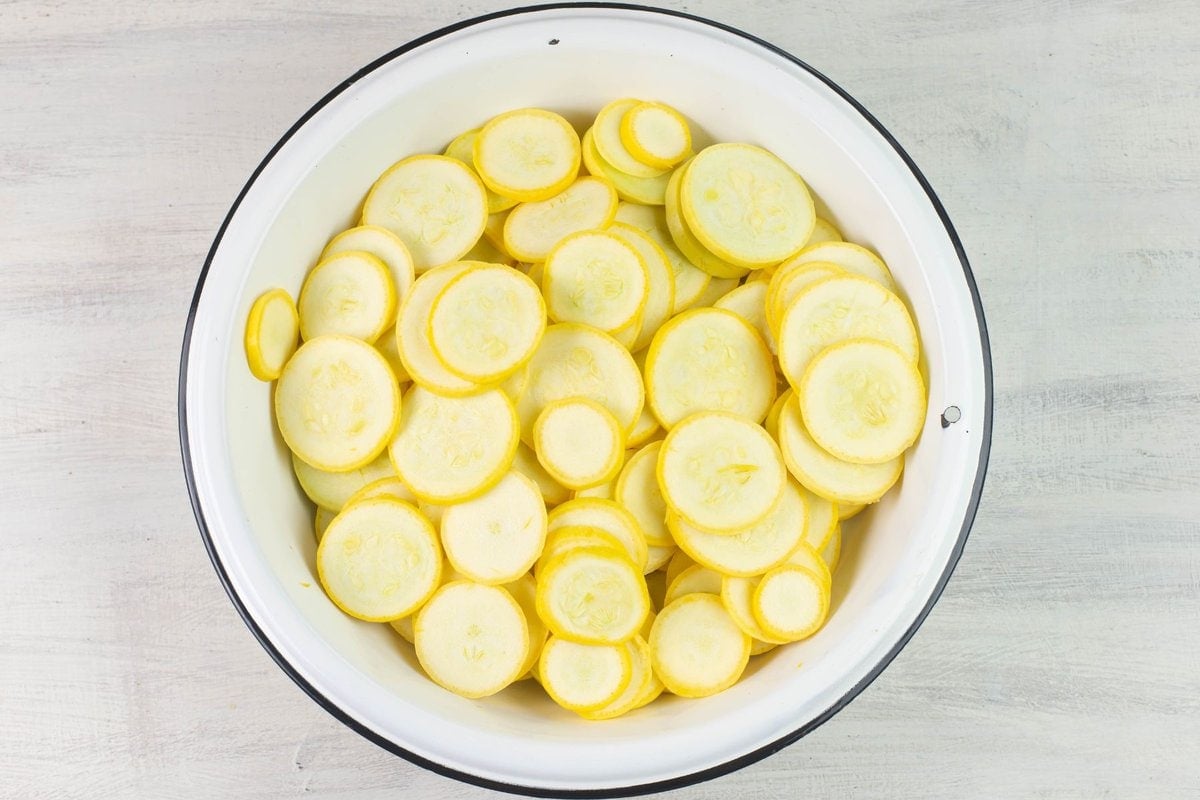
Do you have to blanch Yellow Squash Before Dehydrating?
Blanching is a recommended step when dehydrating certain vegetables. It helps with the color and texture of the dried squash. And shortens the dehydrating time by a couple of hours.
I've done both and prefer blanched squash over the unblanched squash. It dehydrates faster and retains its bright yellow color.
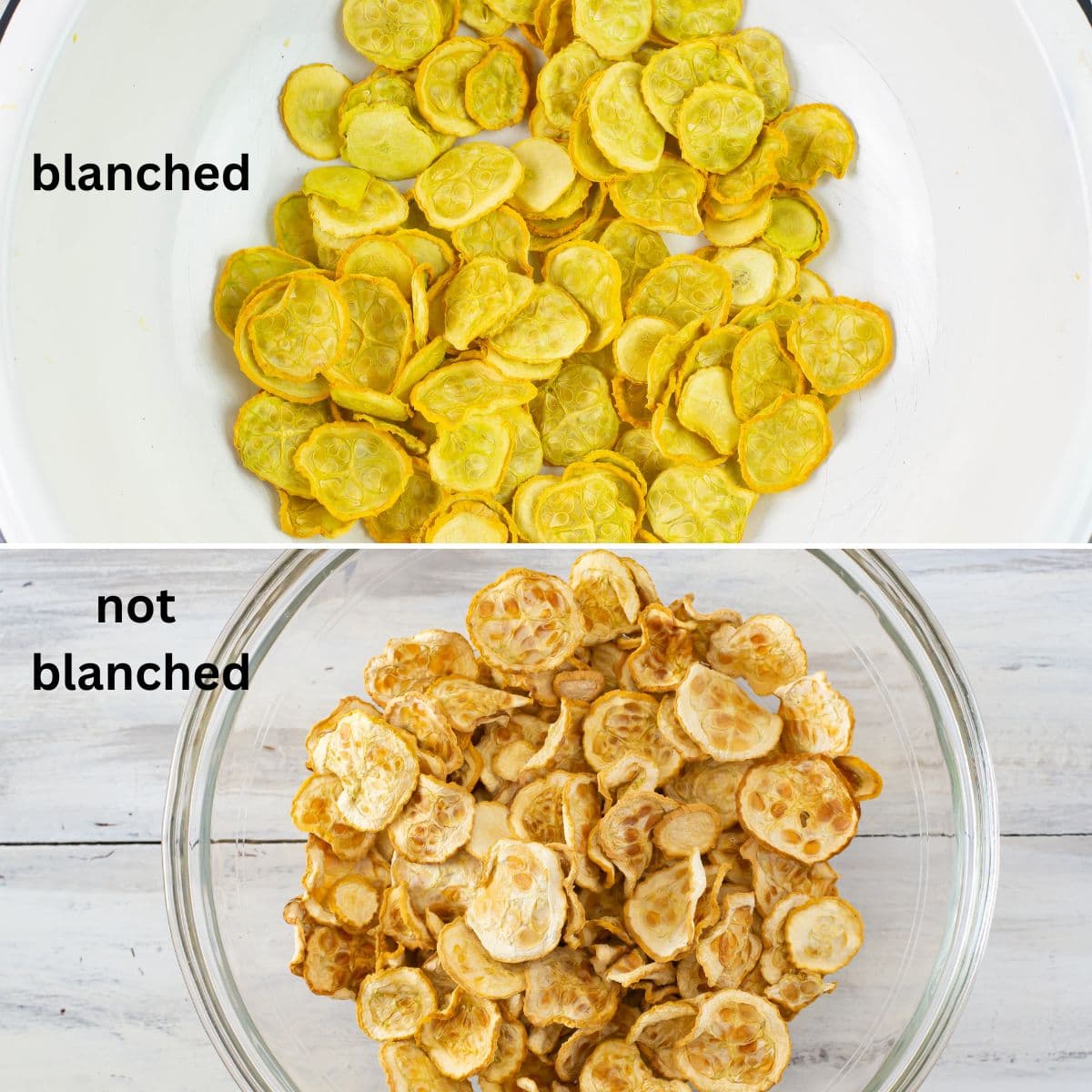
Join thousands of happy foodies on the FOMF VIP newsletter today!
Step-by-Step Guide to Dehydrating Yellow Squash
- Preparation: Wash your yellow squash thoroughly, I like to soak my fresh vegetables in the sink for about 20 minutes to make sure all the dirt has been removed. Pat dry and then slice it into ¼ inch thick slices.

- Arrange: Lay the slices out in a single layer on your dehydrator trays, ensuring they don't overlap.
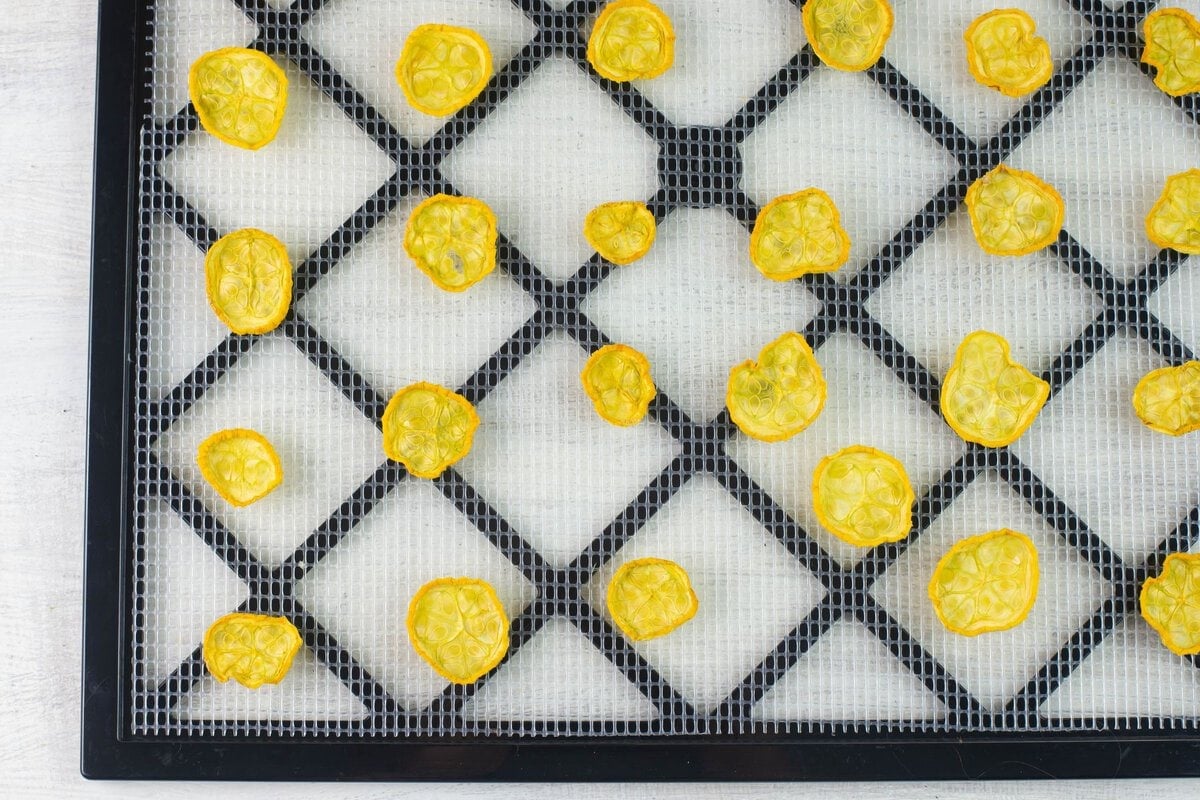
- Dehydrate: Set your food dehydrator to 135°F (57°C). The drying process will take approximately 8-10 hours for ¼ inch slices.
- Check for Dryness: Your squash should be brittle or very crisp once fully dehydrated.
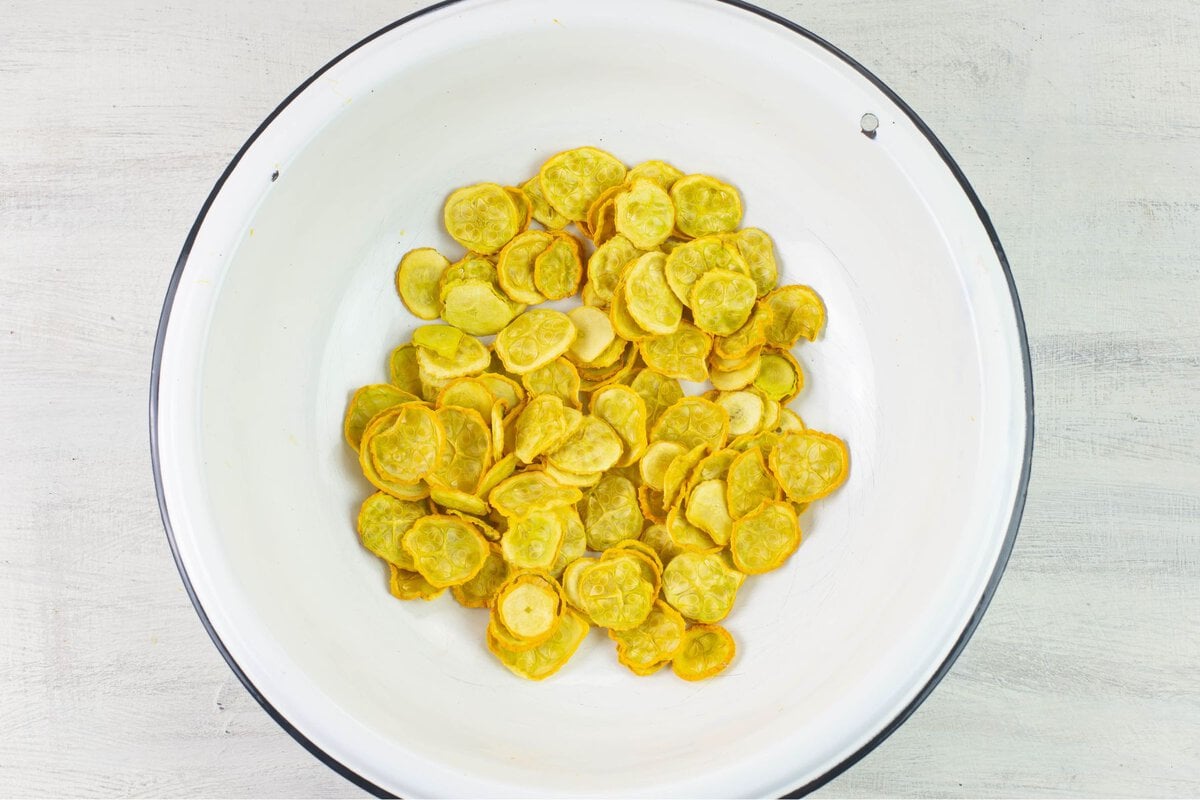
Using a food dehydrator simplifies the drying process, making it an effortless way to preserve your summer squash.
How to know when the squash is done?
To make sure that your squash is completely dried, perform a dryness check. After the initial drying period, remove a piece from the dehydrator and allow it to cool for a few minutes.
- Once cooled, check the texture; the piece should feel brittle or very crisp to the touch. Try bending the cooled piece; it should not bend or feel pliable.
- If the squash does bend or shows any signs of moisture, return it to the dehydrator for additional drying time.
- Checking multiple pieces from different areas of the tray is advisable, as drying can be uneven across the batch.
Properly dried squash should have a uniform texture and no visible moisture on the surface or when broken apart.
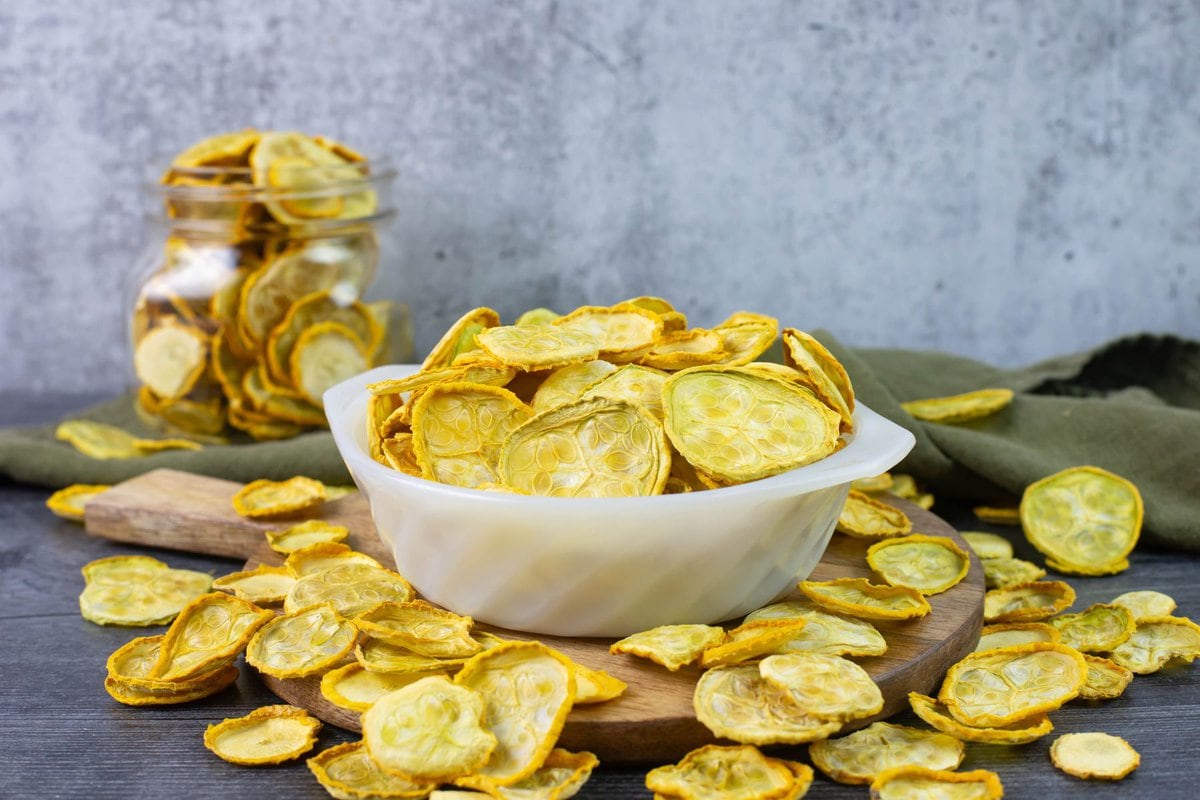
Conditioning Dried Squash
Conditioning dried vegetables before long-term storage is key to ensuring their longevity.
Simply place the cooled, dried squash in a loosely filled container, and shake daily for a week to distribute any remaining moisture evenly. This step minimizes the risk of mold growth.
Benefits of Dehydrating Vegetables
Dehydrating vegetables is one of the easiest and most cost-effective food preservation methods available. It requires minimal hands-on time, and the end product takes up less storage space, retains nutritional value, and can last for months, if not years, when stored properly.
Dehydrating summer squash, in particular, is straightforward and provides a delightful way to fill your pantry with healthy, ready-to-use ingredients.
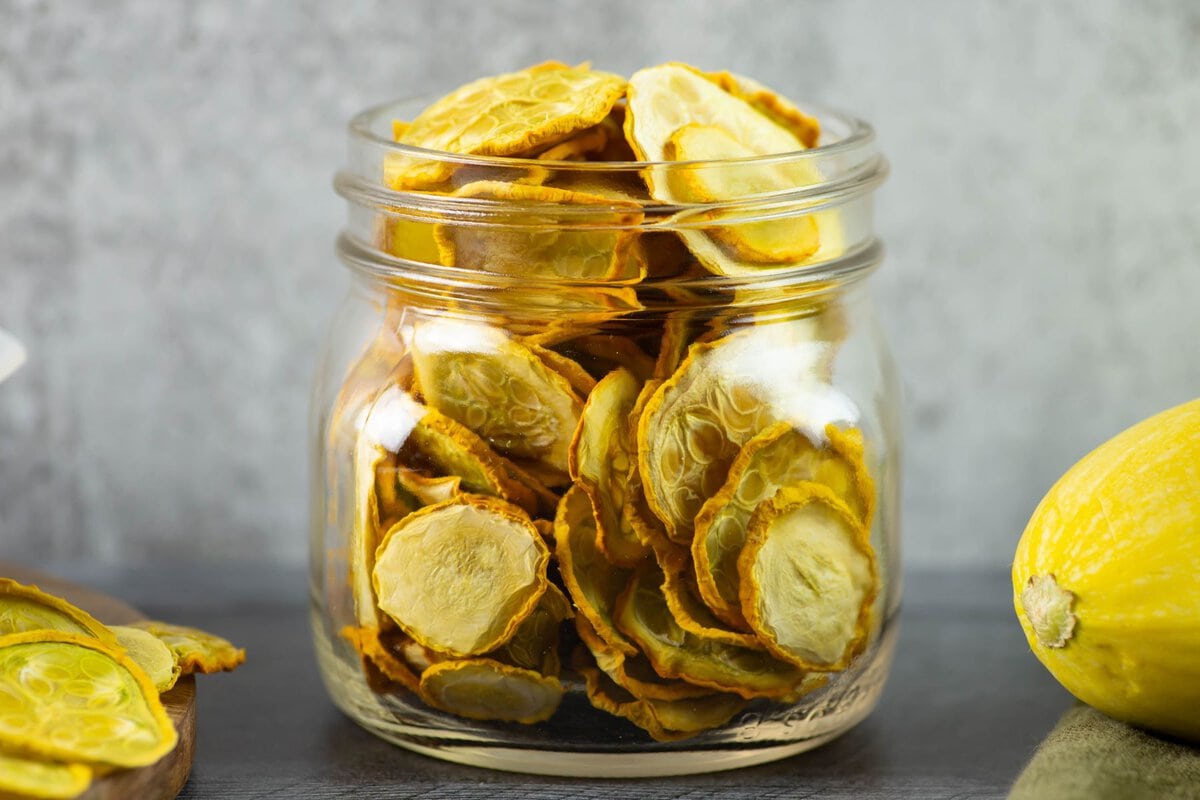
Best storage options include:
- Glass Jars with tight fitting lids: Protect from light and are reusable. I like to use mason jars the vacuum seal the jars.
- Vacuum-Sealed Bags: Minimize air exposure and extend shelf life.
- Mylar Bags with Oxygen Absorbers: Ideal for long-term storage.
Store your dehydrated foods in a cool, dark pantry or cupboard to maximize their shelf life, which can be up to a year or more if properly sealed and stored.
Helpful Dehydrating Equipment
Using the right tools is just as important as using the right ingredients. Make sure your recipes turn out perfect every time.
Creative Ways to Use Dehydrated Squash
Rehydrate the dried squash by soaking in warm water and draining before adding it to your recipes. Here are a few ideas to help you get started.
- Rehydrate for stir-fries or casseroles
- Grind into a powder for soups or sauces
- Use as a crunchy squash chips snack dipped into cucumber dill dip
- Add to bread or muffin recipes
- Toss into garden vegetable sauce for pasta dishes
Recipe FAQS
Yes, you can lightly season your squash, but avoid adding too much salt as it can affect the drying process.
Simply soak in water or broth until tender, usually about 15-30 minutes.
If stored properly in a cool, dark place, dehydrated squash can last up to a year or more. If exposed to moisture or not stored correctly, it can spoil.
6 Handy Tips for Dehydrating Squash
- Slice your squash consistently to ensure even drying.
- Rotate trays for uniform drying.
- Keep a close eye on drying times; humidity affects drying time.
- Store properly to maximize shelf life.
- Label containers with date of dehydration.
- Experiment with seasoning blends for flavored snacks.
Stock Your Pantry with Dehydrated Goodness
Dehydrating yellow squash is a simple, satisfying way to ensure you're never without this versatile vegetable. Whether you're looking to extend the shelf life of your garden's yield, lighten your load on the trail, or simply enjoy summer flavors year-round, dehydrating squash opens up a world of culinary possibilities.
Dried Vegetable Recipes
Next, why not try dehydrating tomatoes, peppers, or mushrooms? The method's much the same, and the results are just as delicious!
Email questions or recipe requests to flouronmyface@gmail.com. Follow me on Pinterest, YouTube, Instagram and Facebook.

How To Dehydrate Yellow Squash
Ingredients
- 16 medium yellow squash (bottle neck or summer squash)
- 10 cups water
Instructions
Prep Work
- Scrub and rinse the yellow squash under cold water.
- With a vegetable mandolin or a sharp paring knife slice the squash into ¼ inch thick slices or 1 inch thick cubes.
- Line each of the deyhydrator trays with a mesh screen.
- Fill each of the trays with a single layer of squash slices or cubes. Do not overlap the slices of squash. Repeat with as many trays as you have for your food dehydrator or until you run out of squash.
Dehydrating Squash
- Close the dehydrator. Turn the dehydrator on 135 °F degrees.
- Depending on the temperture of your dehydrator it can take anywhere from 8 to 12 hours for the squash to be completly dry.
Recipe Expert Tips
- Slice your squash consistently to ensure even drying.
- Rotate trays for uniform drying.
- Keep a close eye on drying times; humidity affects drying time.
- Store properly to maximize shelf life.
- Label containers with date of dehydration.
- Experiment with seasoning blends for flavored snacks.











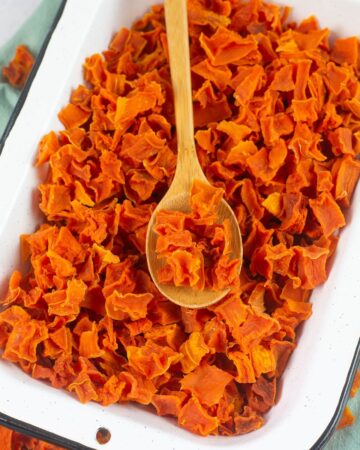
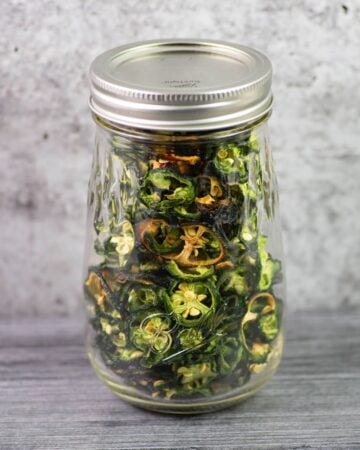
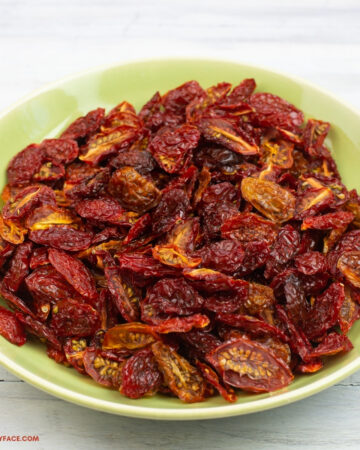
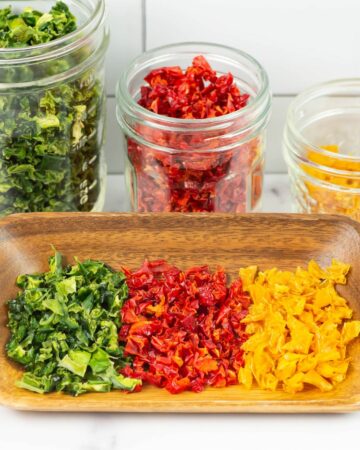
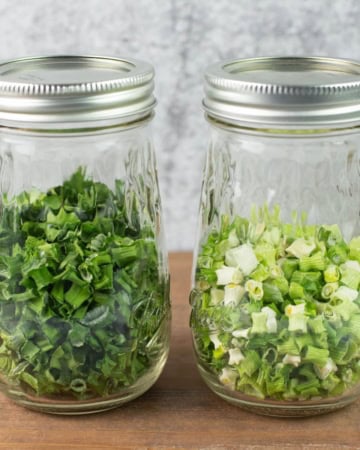

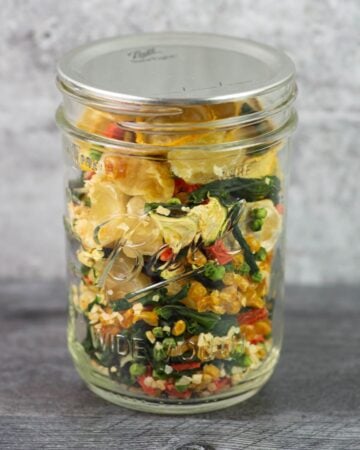

Leave a Reply